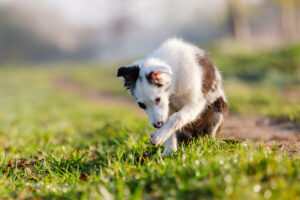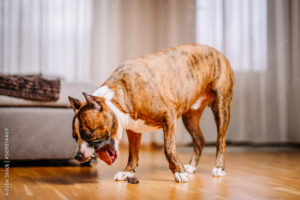When you leave, does your furry friend transform into a whirlwind of destruction, barking, or anxious pacing? You might be dealing with dog separation anxiety, a common behavioral issue affecting many pups. Don’t worry, help is available! Let’s understand this condition, identify the tell-tale signs, and explore effective solutions.
What is Dog Separation Anxiety?
Dog separation anxiety occurs when dogs experience extreme distress and anxiety upon being separated from their beloved owners. It goes beyond typical clingy behavior; it’s a genuine sense of panic and discomfort when they find themselves alone.
Signs of Dog Separation Anxiety
Dogs with separation anxiety might exhibit a range of distressing behaviors, including:
- Destructive Chewing: Chewing furniture, shoes, or anything in sight.
- Excessive Barking, Howling, or Whining: Vocalizations that persist while you’re away.
- Inappropriate Elimination: Going potty inside the house, even if house-trained.
- Pacing or Restlessness: Unable to settle down in your absence.
- Escape Attempts: Frantically digging, clawing, or trying to break free from confinement.
- Changes in Appetite: Refusing to eat or showing a decreased interest in food.
- Extreme Excitement Upon Your Return: Over-the-top greetings that go beyond normal enthusiasm.
Causes of Dog Separation Anxiety
Numerous factors can contribute to separation anxiety in dogs:
- Changes in Routine: Disruptions in their regular schedules can be unsettling.
- New Environment: Moving to a new home, new family members or even furniture rearrangements can be stressful.
- Loss or Trauma: The loss of a companion animal or owner, or traumatic experiences, can trigger anxiety.
- Breed Predisposition: Certain breeds might be more prone to separation anxiety.
Solutions for Dog Separation Anxiety
Helping a dog with separation anxiety takes patience and consistency. Here are some effective approaches:
Gradual Desensitization: Start by leaving your dog alone for short intervals, slowly increasing the duration over time. Always reward calm behavior.
Counterconditioning: Change your dog’s association with being left alone by offering a special treat or fun puzzle toy each time you leave.
Crate Training: A crate can provide a safe, secure space for your dog, but only if introduced properly.
Exercise and Enrichment: A long walk or playtime before you leave can help tire them out and reduce anxious energy. Provide mentally stimulating toys and activities when they are home alone.
Calming Aids: Consider natural calming supplements, pheromone sprays, or calming shirts.
Maintain a Calm Environment: Keep departures and arrivals low-key, avoiding big displays of attention.
Professional Support: In severe cases, consult your veterinarian or a certified dog behaviorist for tailored treatment plans and possible medication options.
Important Considerations
- Rule Out Medical Issues: Sometimes, underlying health issues can lead to behaviors that resemble separation anxiety. It’s advisable to have your dog examined by a veterinarian to eliminate this possibility.
- Don’t Punish: Your dog isn’t being destructive or disobedient out of spite; they’re in distress. Punishment will only worsen their anxiety.







